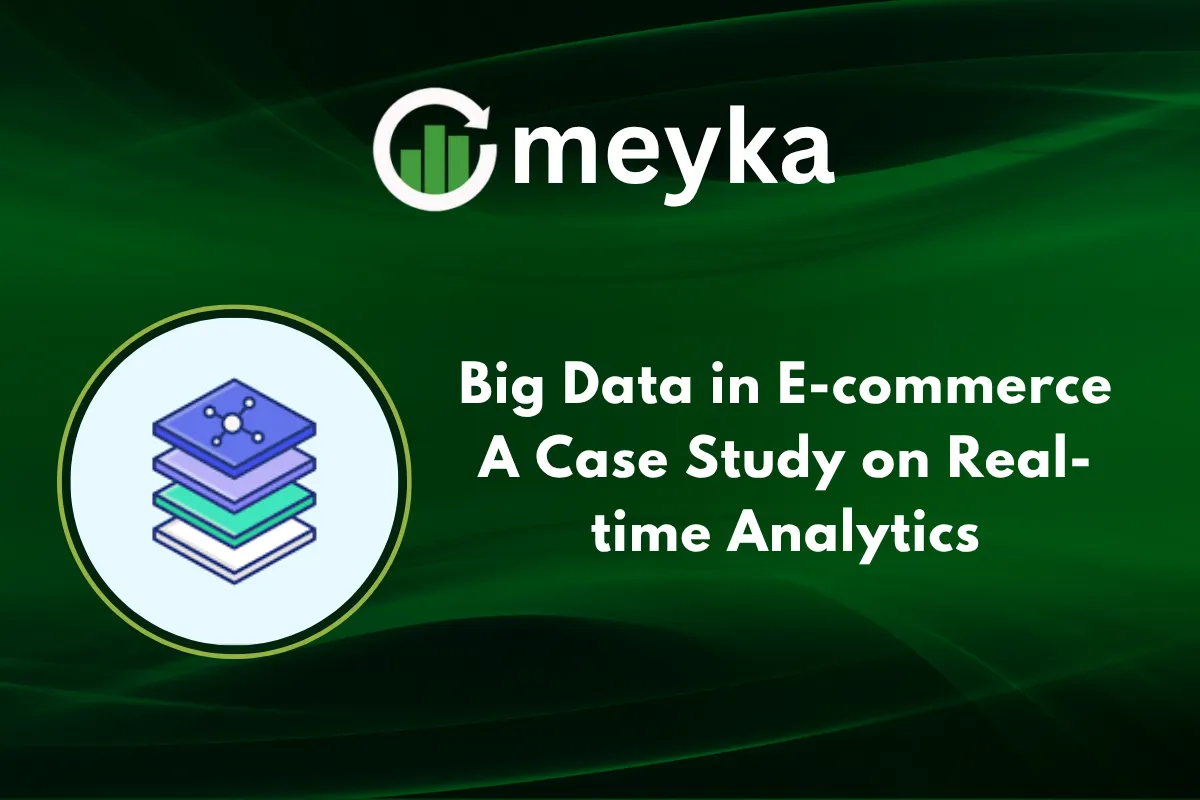Big Data in E-commerce: A Case Study on Real-time Analytics
Have you realized that your E-commerce competitor’s site seems to understand what you want? Interact with a product, add some products to the cart, and boom! You receive a 10% discount offer.
How’s this possible? You wonder.
Well, that’s real-time big data analytics in action. That E-commerce site has been programmed to dynamically shift based on user interaction.
That website is tracking what you view, add to cart, purchase, add to a wishlist, or even how long you stick around. It analyzes this data and more to personalize items, change page views, and even keep you safe.
Here’s how you can make this possible for your E-commerce business, gaining an edge over competitors.
What’s Big Data in E-Commerce?
In a nutshell, big data in E-commerce refers to a large volume of data generated as potential and repeat buyers interact with various E-commerce platforms. From product views, cart additions, delivery tracking, to social media service or product mention.
Big data includes data from your E-commerce platform and competitors’. Even though accessing competitor data may prove challenging, there are third-party Ecommerce datasets providers in place. They offer both historic and real-time data.
Thanks to the development of advanced analytics tools powered by machine learning algorithms and cloud computing, you can set up a real-time analytics system.
With a real-time analytics system and context analyzing AI models in place, you can track what users are doing in real-time. When the system spots an opportunity, it can tailor recommendations and real-time offers, encouraging faster purchase decisions.
Besides personalization, such a system can help with fraud detection as users interact with your site. Also, your marketing team can use the system’s insights to adjust strategies in real-time.
To further illustrate what’s possible with such a system in place, here’s how Amazon is staying ahead of the E-commerce game through real-time analytics.
Case Study: Amazon’s Real-time Analytics in Action
AI-powered personalization and recommendations influence more than 70% of Amazon’s sales. At the core of this is real-time big data analytics.
Amazon analyzes historic data to find trends and real-time data to respond quickly as users navigate through their digital goods and subscription-based services. Here’s how that looks like:
Dynamic pricing
Operating one of the biggest E-commerce sites on the internet and remaining profitable is challenging. However, Amazon’s using big data analytics to solve this challenge and they are winning.
Amazon uses its data services, including Amazon Kinesis, Redshift, and S3 to handle the ingestion, storage, and analysis of data from its E-commerce site. Every cart addition, purchase, click, search, wishlist, and other data element count — feeding data into machine learning algorithms.
The algorithms break down the data while considering various factors before shifting prices. Some factors include, stock availability, current demand, competitor pricing, and delivery speed.
Amazon’s systems change prices multiple times a day, showcasing real-time market analytics in motion. And, this has proven effective, with Amazon seeing a 25% boost in profit thanks to dynamic pricing.
Smart recommendations
If you are an Amazon.com regular, you’ve experienced how the “Frequently bought together,” and, “Customers who bought this also bought,” sections seem to know you. This is not a coincidence.
Amazon runs a smart recommendation system, powered by AWS services like Redshift, SageMaker, and Amazon Personalize. These systems employ deep learning models and collaborative filtering to crunch user data in real-time and serve context-aware recommendations.
As soon as the user interacts with a product, adds it to cart, or makes a purchase, the system is collecting data in the background. Then, the deep learning models analyze the data to extract patterns, updating page views to align with your current wants.
For instance, if you’ve been browsing through books, Amazon may highlight other books written by the same author. Or, if you’ve just bought a camera, you are likely to see tripods, SD cards, and lenses as you keep scrolling through products.
Fraud detection
Amazon operates multiple E-commerce setups. From Amazon.com , Amazon Prime, Amazon Advertising, to Amazon Pay. These setups process millions of transactions per hour, across sellers, regions, and currencies. With such levels of complexity, even a 1% fraud hit on the transactions is devastating.
To avoid financial and reputational losses, Amazon trains its fraud detection system to stop known and new or evolving fraud.
Feeding real-time data to unsupervised learning AI models makes it possible for Amazon to stop new or evolving fraud. These models are constantly retrained to adapt to new threats across their platforms.
The models look for unusual purchase patterns and behavior anomalies. Say a user places multiple high-value orders, yet they’ve just created a new account. That’s more likely to be flagged by Amazon’s systems.
The fraud detection system also checks for seller-side fraud. It checks for fake listings, coordinated review manipulation, and suspicious price spikes. This prevents sellers from using Amazon as a fraud gateway.
Supply chain optimization
Ever wondered how Amazon is able to manage millions of products, deliver packages in hours, and serve a massive population spanning different regions? Well, the secret is its efficient fulfillment system that’s integrated with real-time data analytics tools.
Amazon has over 1200 distribution and fulfillment centers around the world, supported by cargo planes, trucks, and autonomous robots. To keep these systems in check, Amazon needs real-time visibility across every point.
From the suppliers and warehouses to customer doorsteps, Amazon collects and processes real-time data to ensure everything runs smoothly.
The analytics systems in the supply chain department collect data including, inventory data, transport data, and demand signals. From this data, Amazon can anticipate demand surges, reroute shipments when necessary, and restock efficiently.
On top of the analytics system are predictive analytics algorithms. They are tasked with analyzing regional buying trends, seasonal patterns, supplier performance, and weather data. Insights from this data drive inventory rebalancing and redirecting, warehouse placement, and staff scheduling.
Closing Words
Yes, real-time analytics powers dynamic pricing, smart recommendations, fraud detection, and supply chain optimization. And, there’s more!
For instance, you can use real-time analytics to enhance campaign tracking. Your marketing teams can adjust campaign strategies based on live performance data. Nonetheless, there’s a caveat!
Setting up a reliable real-time big data analytics system requires rigorous data governance. Maintaining always-on analytics pipelines and cloud resources requires expertise, too! And, if you don’t keep an eye on data ethical and legal requirements, you may end up in trouble.
So, to reap the benefits of real-time big data analytics in E-commerce, be ready to navigate the challenges. Get a specialized team to develop and maintain systems. Also, don’t forget the legal aspect of it all.
Disclaimer:
The content shared by Meyka AI PTY LTD is solely for research and informational purposes. Meyka is not a financial advisory service, and the information provided should not be considered investment or trading advice.






